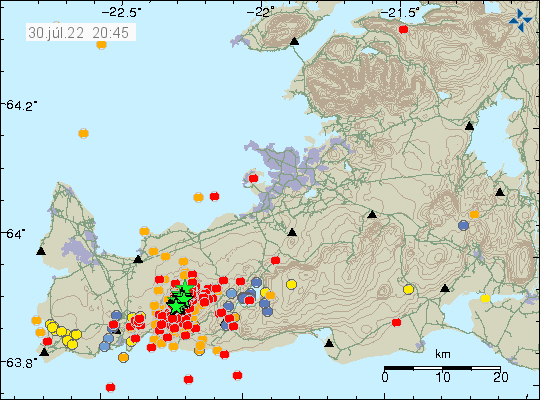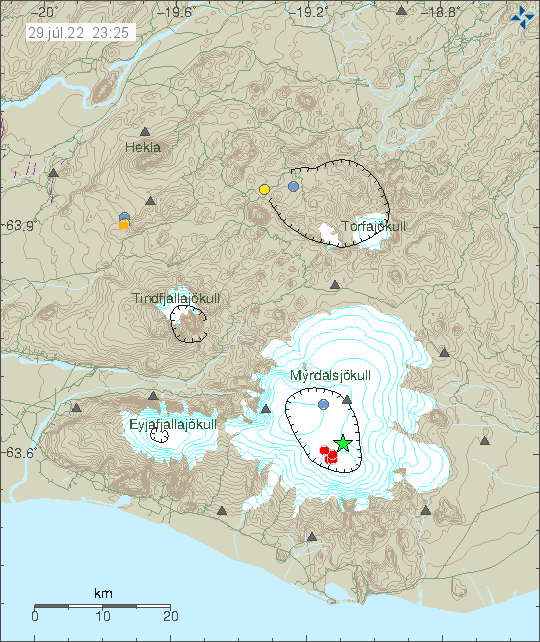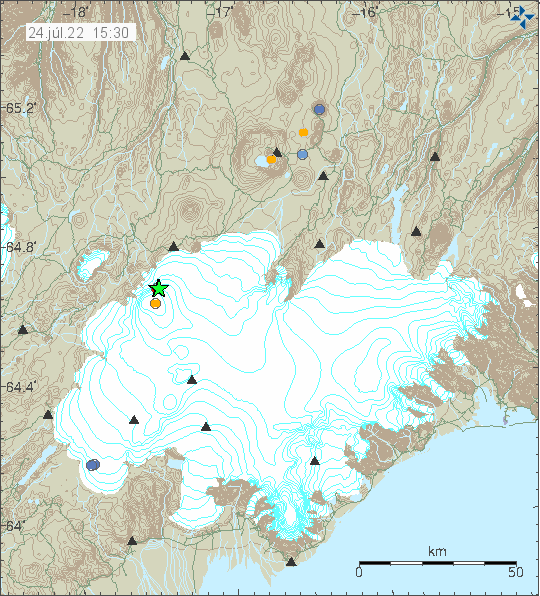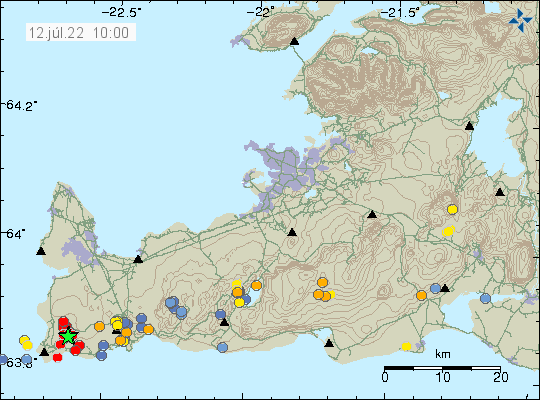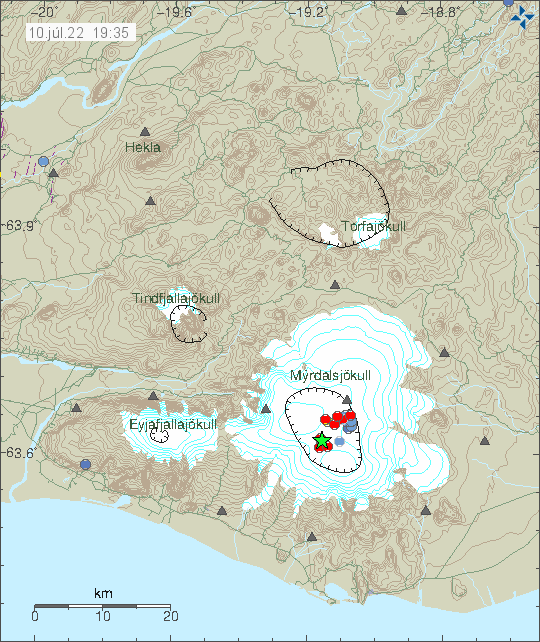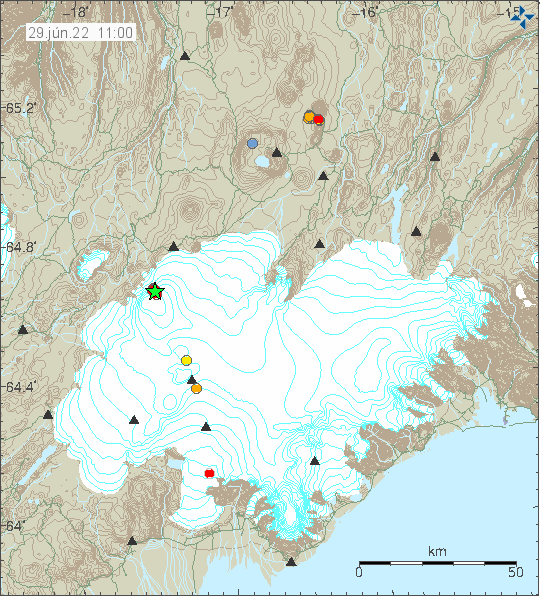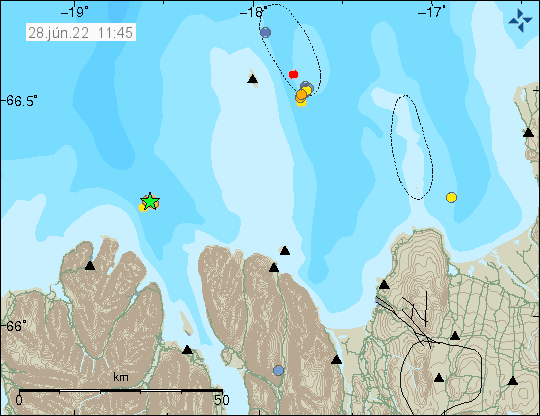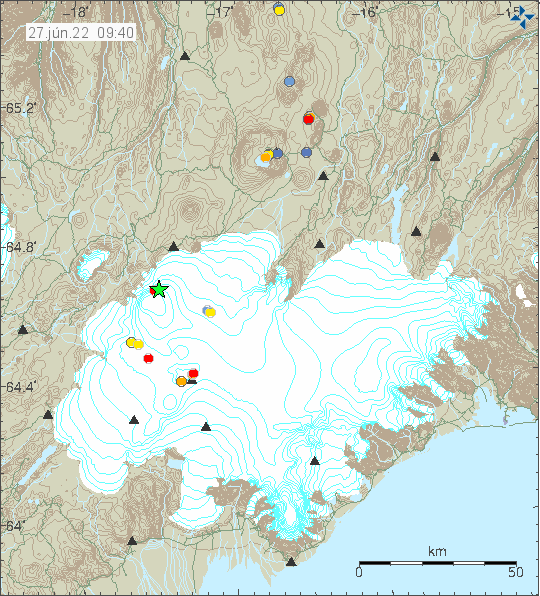This is going to be a short update because the situation is constantly changing. This update is written at 12:07 UTC on 31-July-2022.
At the writing of this article at 11:32 UTC no eruption has started in Fagradalsfjall mountain or nearby area. Over 3000 earthquakes have been recorded in the last 24 hours in and around Fagradalsfjall mountain since the earthquake activity started yesterday (30-July-2022). There have not been any major changes in the crater in Fagradalsfjall mountain, it does seem to release more gas than normal. That is at least how it appears, if that is real or not I don’t know.


I think this might be a stronger activity than last year, but if that is correct estimate is a wait and see. There has not been any major change in GPS location and that suggest that the area is as inflated as it possibly can be. It is impossible to know when the magma breaks up in the crust, but earthquake activity suggests that it has reached the depth of 2 km, meaning the magma has moved up a lot in the last 24 hours, since this earthquake activity started on the depth of 8 km yesterday.
Donations
Please remember to support my work with donations. Thanks for the support. 🙂

